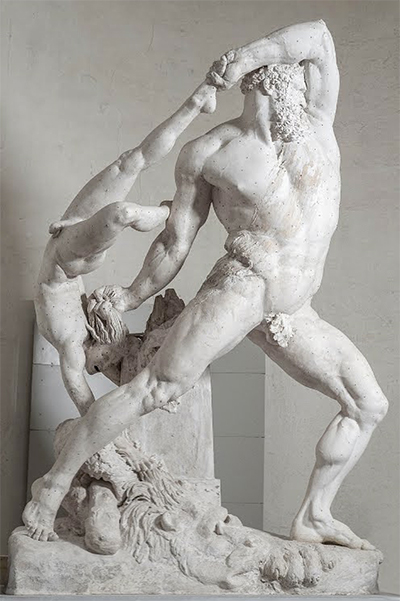The delightful double portrait will remind some of the sister sculptures, Creugas and Damoxenos. Hercules and Lichas was perceived at the time as carrying political symbolism within it, making it harder for Canova to then sell it on once complete.
The artist would eventually receive a generous payment from financier Giovanni Torlonia for it, after several other established patrons decided against adding it to their own collections. The piece received a strong reception from academics and art critics alike, thanks to its powerful and emotional imagery which was entirely typical of the sculptor. It has since been on display at the National Gallery of Modern Art in Rome, whilst the plaster version can be found in a museum dedicated entirely to the artist's life in his boyhood village. The occupying French saw this piece in 1798 and believed that it was produced to represent the French Revolution, with Hercules repelling Lichas just as the domestic forces had driven away the monarchy. The French political situation would regularly impact life in Italy during the late 18th and early 19th century and the two's histories are hugely intertwined across a period of several centuries, particularly in the lead up to Italy becoming a unified nation.
Canova was famed for his flair, producing some truly exquisite figurative sculptures across the full length of his career. His most famous artwork would have to be Psyche Revived by Cupid's Kiss, though the likes of Venus Victrix and The Three Graces were also highly impressive. He left behind a significant legacy which marked out the entire Neo-Classical sculpture category for praise and attracted many followers. He was as gifted and innovative as he was technically skilled, though he would always require assistance in order to complete such a body of work which he took on in order to satisfy his patrons, many of whom were particularly influential in their own right. He predominantly produced single figure sculptures and a small number of paintings. Before all of these would be drawings in varying levels of detail that laid the groundwork for his creative thinking.
The Museum Gipsoteca Antonio Canova hosts a large number of artworks from the artist's career. It is based in Possagno, an Italian village in which the artist himself was born. It works hard to continue to promote his achievements and draw new audiences to his work as well as promoting the region in which he was born. The museum itself has a large number of plaster pieces left over from his career, some of which may well have been discovered within his large studio where many of his creative innovations took place. Aside from those, there are also reliefs, sketches and paintings which help to provide a broad summary of his considerable and varied achievements. As with most other museums dedicated entirely to a single artist, there are also many other items from his lifetime such as personal possessions, books and more which help to illustrate more about the man himself as well as the art that he produced.




